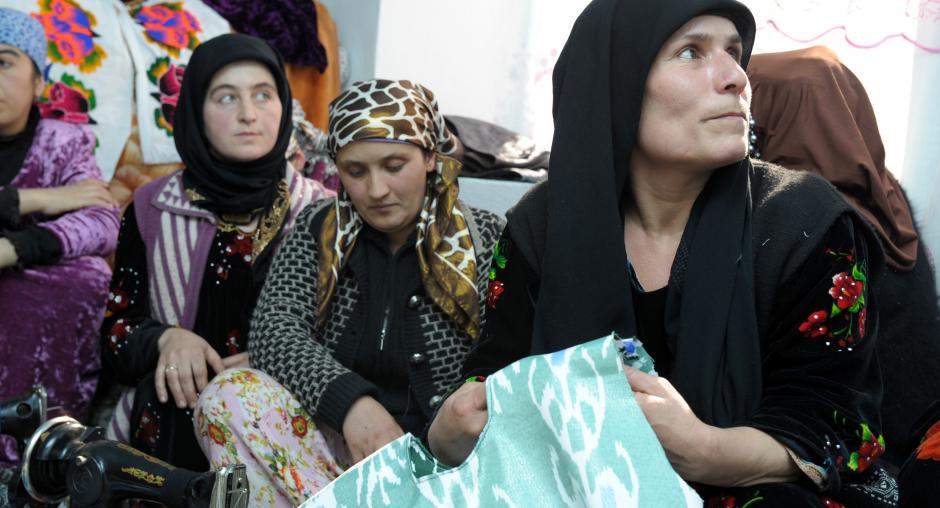The absence of any positive affect on the schooling of left‐behind ladies is likely to be defined by Tajikistan’s cultural norms and establishments. The empirical proof signifies that while current migration is related to a rise in household dimension, a completed migration episode two years before the interview was adopted by family members moving out. At the same time, our empirical analysis demonstrates that migrant families doubled up in response to a financial crisis to the identical extent as non‐migrant households, which suggests that labour migration in Tajikistan doesn’t insure in opposition to economic shocks in the long term. In Tajikistan, spouse abuse is a significant problem that has obtained just about no consideration from researchers or the federal government of Tajikistan. This descriptive research seeks to understand women’s approval of wife abuse and the extent of wife abuse in Tajik women’s lives.
Victims seeking prosecution and punishment of the abuser should deliver claims underneath articles of the Tajik Criminal Code that govern assault and comparable acts involving pressure or violence. The regulation does not define the time period “family” and, according to the interpretation of a number of specialists and ladies’s rights lawyers, leaves women who are divorced or in polygamous, youngster, or unregistered marriages unprotected.

Across Tajikistan In eighty Photos
Although Tajikistan’s Family Code ensures rights to marital property for spouses, loopholes may prevent women from realizing this benefit. Forced, early, and unregistered marriages enhance women’s and ladies’ vulnerability to domestic violence. While child marriage in itself may be a form of family violence when arranged by members of the family, research also demonstrates a robust correlation between earlier marriage and higher threat of experiencing spousal violence. Perhaps most problematically, as Human Rights Watch heard from different experts, the joint use of property following divorce in circumstances where there was domestic violence can spur further, worse violence.
Last year the land Bibigul had been farming for years was unlawfully taken away from her, on a false claim, by the leader of the dehkhan (collective) farm to which she belonged. But she fought again, and sought legal counsel from a neighborhood legend, a powerful and persuasive woman by the name of Barno Rakhimova, who has been combating for girls’s rights and empowerment throughout her profession as a lawyer.
Nowhere in Tajik law, together with Tajikistan’s Criminal Code, is domestic violence criminalized as a particular crime. She said that out of 15 families who had visited her center in one yr looking for varied social providers, 11 of them were households the place women had experienced extreme forms of domestic violence by the hands of their intimate partners and different members of the family. UN Women, the UN agency that champions gender equality, drawing on statistics from the government of Tajikistan, notes that though 20 % of married women have experienced emotional, physical or sexual violence by their husbands, just one in five victims files a report. Violence against women in Tajikistan is pervasive, though precise figures don’t exist because of underreporting, the dearth of a government-organized system of information collection, and a scarcity of disaggregated data designating the relationship of the perpetrator to the victim. As elsewhere within the publish-Soviet world, the economic hardship after the collapse of the Soviet Union led to disproportionate declines in women’s status and well-being.
Relevant provisions of the Criminal Code, for example, embrace intentional infliction of major bodily harm, minor bodily harm, or bodily harm to a lesser degree. As is obvious from the law’s title, its focus is on prevention, somewhat than protection or prosecution. To press costs towards a perpetrator, a girl must use articles in the Tajik Criminal Code such as those on battery and intentional infliction of harm to one’s well being.
Tajikistan’s women take solar energy into their very own hands

The exams violate women’s rights under Tajikistan’s Law On State Guarantees of Equal Rights for Men and Women and Equal Opportunities for Their Implementation, Kuvatova underlined. But in a rustic with one of Central Asia’s bleakest information for women’s rights, these disclaimers do not all the time make a distinction.
United Nations Development Programme
As with several women Human Rights Watch interviewed in different elements of Tajikistan, survivors mentioned that some of the worst types of abuse they skilled have been initiated by a husband for no particular cause beyond a want to claim energy and inflict terror on their partners. A survivor of home violence, Rayhona fled her residence a number of occasions after fights along with her abusive husband’s second spouse. On a number of events she moved again in along with her parents but couldn’t keep because there were too many people residing in the household now that her brothers had married and had their very own children. She returned to her abusive husband again and again as a result of she simply noticed no different options obtainable. Survivors of home violence, service suppliers, and experts in Tajikistan had blended views about whether details about the Family Violence Law and about services, protection, and justice is reaching those that want it.

UNODC guidelines on legal justice response to violence in opposition to women recommend provision of free legal help to survivors who’re unable to pay. In the few instances examined by Human Rights Watch where perpetrators of domestic violence have confronted some measure of authorized penalties, legal professionals were concerned in representing the survivor. While specialists and service suppliers advised Human Rights Watch that the emergence over the past four years of gender-delicate models within some police stations in Tajikistan have contributed to small enhancements to the police response to domestic violence, these models are few and much between.
tajikistan lady photos
The WEP course will also be offered in the areas of Dushanbe (capitol city), Khotlan, Rusht Valley and Khorog. The training program consists of 22 core competencies developed and designed by TEG particularly for the WEP. All coaching was offered by feminine SMEs within the fields of Domestic Violence, Gender Issues, Crime Scene Management, Interview and Interrogation, Female Defensive Tactics, Psychology and Tactical Police Bicycle Patrol.
Men started to go away the country in droves, to seek for better paid work elsewhere. According to the brand new rules, women should tie white or colourful scarves in a standard Tajik method, behind the head, exposing the neck beneath the chin. In early August, greater than 8,000 women in Dushanbe had been stopped by state officials and asked to take away the hijab, whereas six million mobile phone users received text messages on September 6th 2017 promoting conventional dress. The directions to look at and respect traditional Tajik garments have been part of the federal government’s coverage to protect national tradition and traditions. In winter, exterior of the massive cities, many rural households can entry electricity for only one to 3 hours a day.
Tajikistan Table of ContentsThe Soviet period saw the implementation of policies designed to rework the status of women. During the 1930s, the Soviet authorities launched a marketing campaign for ladies’s equality in Tajikistan, as they did elsewhere in Central Asia. Eventually main adjustments resulted from such packages, however initially they provoked intense public opposition. For example tajikistan women, women who appeared in public with out the standard all-enveloping veil were ostracized by society and even killed by relatives for supposedly shaming their families by what was thought-about unchaste conduct. employed in non-wage actions (i.e. unpaid family work) and subsistence work in comparison with women in non-migrant households.
Such vision lays a basis to overcome current challenges faced by the country. Humanitarian organizations embody the Aga Khan Foundation, Relief International, Humanitarian Health Assistance, and Medicine sans Frontieres. Exports to the United States include aluminum, textiles, equipment, and cereals. Imports from the United States embody grain, dairy merchandise, eggs, honey, equipment, and preserved foods.

Recent Comments